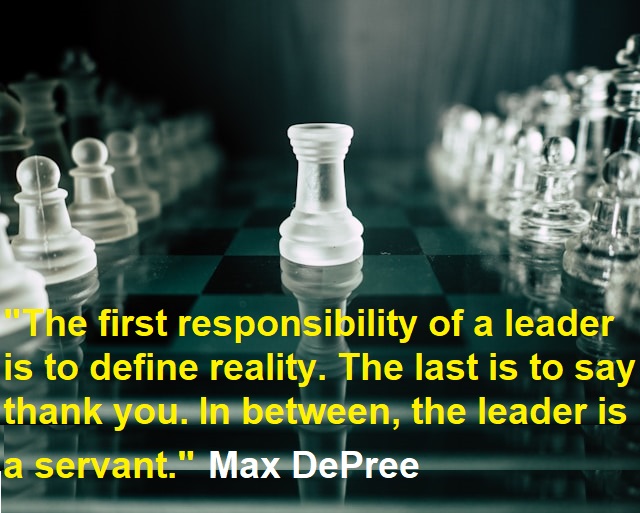3 Types of Leadership Styles to Consider in 2024
Leadership is the ability of an individual to inspire, motivate, and guide a group of people to act toward the achievement of common objectives and to continually upgrade an organization.
Leadership being such an important topic in the world of organizations, it has been approached from different perspectives that have attempted to define it, however, the variety of concepts constructed could detract from the scientific consistency of the term itself, due to the lack of a single and consistent definition.
“There are almost as many definitions of leadership as there are people who have tried to define the concept.” (Ralph M. Stogdill 1990)
Leaders are found and needed in almost every area of society, from business to politics. Likewise, it must be understood that being a leader is not a trait that is only associated with those professionals who work in management positions. An employee without executive or managerial responsibilities can also be a leader.
Here it is necessary to differentiate between leader and manager, since, although they tend to be used synonymously, both profiles have different functions. While leaders are visionaries, setting goals and inspiring people to achieve them, managers focus on implementing processes and ensuring that set objectives are achieved.

“The first responsibility of a leader is to define reality. The last is to say thank you. In between, the leader is a servant.” Max DePree
There are numerous leadership styles have been defined by researchers, but in today’s article, we’re focusing your concentration on the much-needed leadership styles of 2024.
1. Transformational Leadership Style:
Transformational leadership is a concept coined by sociologist James MacGregor Burns in 1978. However, it was developed years later by psychologist Bernard Bass.
According to Bernard Bass, a transformational leader manages to positively influence his followers. He is characterized by having a clear and supportive vision of the direction of the organization; but, also, for being able to transmit it to his collaborators convincingly and enthusiastically. Elon Musk is the current example of transformational leadership.
Transformational leadership not only provides multiple benefits for organizations to achieve their goals but also helps group members fulfill their potential. Some of the key characteristics of this leadership style are the ability to motivate and inspire followers and to direct positive changes in groups.
This leadership creates a climate of trust in which all employees feel valued and listened to. It greatly stimulates their creativity and innovation because it encourages them to take risks and look for original solutions.
2. Adaptive Leadership Style:
Adaptive leadership is one of the most effective styles for addressing uncertainties with triumphant victory. Here, adaptive leadership includes a leadership style aimed at addressing complex challenges by mobilizing people to adopt new techniques that help them thrive. The critical issue in this leadership style is adaptation. It means adapting to new situations, whether good or bad.
The volatile and uncertain nature of today’s corporate world requires leaders who can adapt and handle challenging situations effectively.
Adaptive leadership is vital to meeting the long-term challenges that affect business and life. Also, adaptive leadership deals primarily with adaptive problems and technical problems.
Adaptive problems include challenges without established models for finding solutions, while technical problems can be easily solved through established plans. Most companies and institutions have had to bring in adaptive leadership to strategize ways to mitigate any critical situation.
Adaptive leaders possess high emotional intelligence. When dealing with extremely complex topics, emotions are very involved both when dealing with challenges and people. Therefore, emotions can negatively or positively impact the other principles depending on several variables.
3. Inclusive Leadership Style:
Inclusive leadership focuses primarily on fostering diversity and inclusion in the work environment. This form of leadership is important for employee productivity and well-being, and also for customer satisfaction. Well, leaders manage to generate an environment of empathy and respect where everyone can show themselves as they are without fear of suffering discrimination.
Likewise, this approach implies that leaders have an open mind regarding different opinions and that they can select the best idea to implement in the projects carried out and in the work methodology. This way you can make everyone feel more comfortable with their work and feel more motivated to do things well.
The inclusive leader seeks to create an environment in which each member feels accepted and can contribute fully. Regardless of your origin, gender, race, sexual orientation, or any other personal characteristic.
This not only improves employee well-being. It also allows you to boost creativity, innovation, and team performance in general.
You might also like:
Leaders are not born or made: They are self-made
Elon Musk’s Life, Vision, and Leadership Lessons for Success
What is Thought Leadership & 10 qualities of a Thought Leader

Exceptional article Rising Star about the different type of leadership styles to consider in 2024.
Firstly, a Leader is a person whom in a Company, all staff members look towards to and constantly listen to as the person who is in charge and handles strategic decisions.
Secondly, I find this article very interesting and educational to read about. The transformational leadership style is a nice definition, it focuses on bringing effective change and delivering the best product. Elon Mask who is the Billionaire and founder of Tesla car brand, a Rich Tycoon is a great example of such a style.
Lastly, inclusive leadership style is all about fostering diversity and inclusion in the workplace yet adaptable or adaptive leadership style focuses on beating uncertainties with triumphant victory or success in other words.
This article reminds me of a Business Studies Class I enjoyed being part of at High School. Thanks for this educational post??
Very nice bro, thanks for your time and appreciation and for your worthy contribution. I really appreciate your support and dedication. Stay in touch… Kind wishes
You are welcome sir??